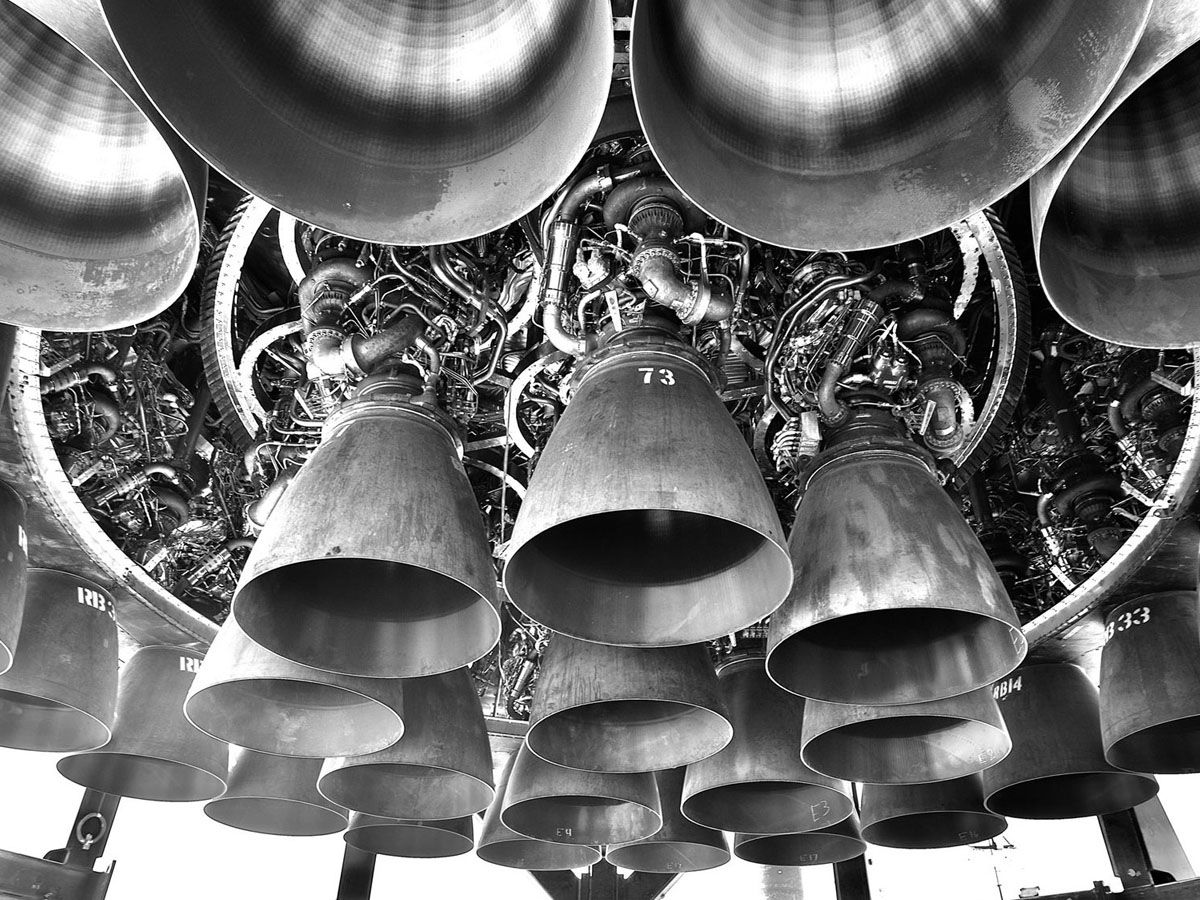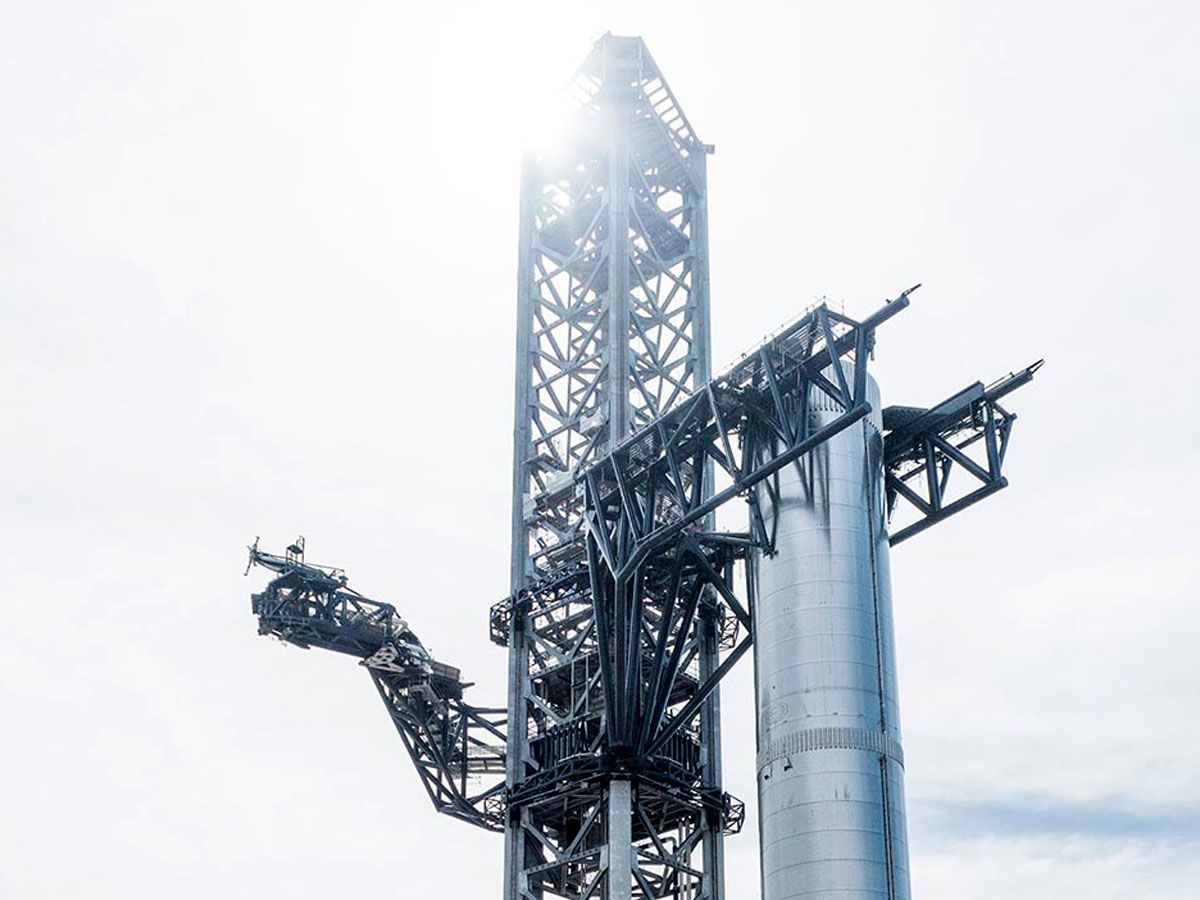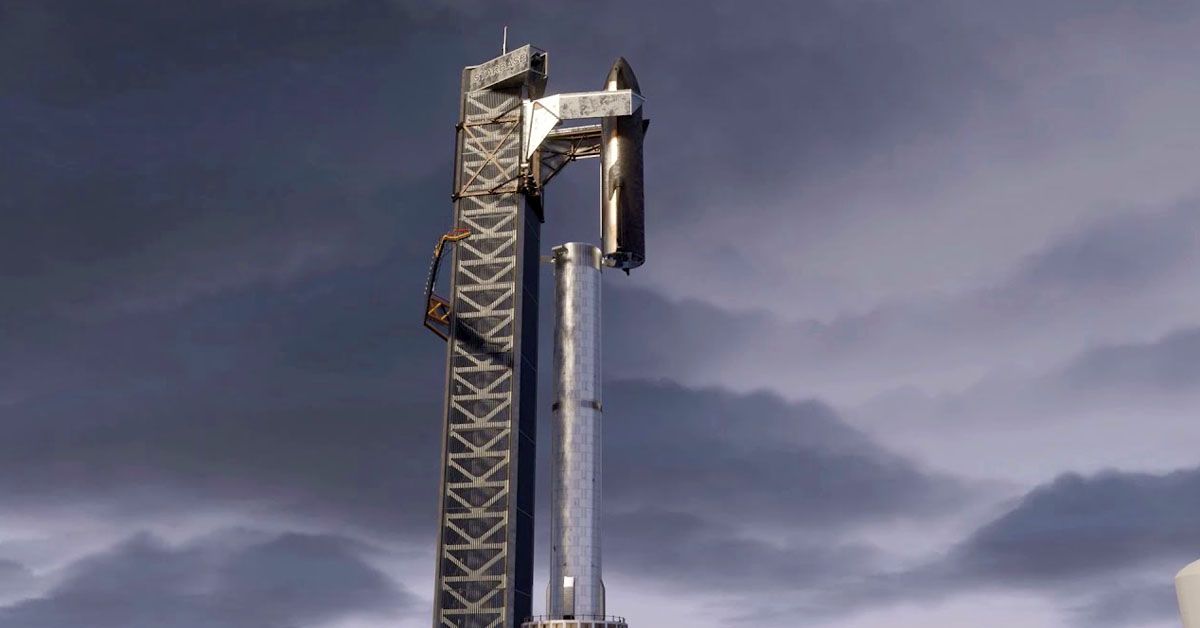We're about to embark on a thrilling journey through the ambitious world of SpaceX and its audacious CEO, Elon Musk. He set the Twittersphere ablaze with a tantalizing hint about his venture, catching a massive Super Heavy booster with, get this, robot chopsticks! An idea straight out of a science fiction novel? Perhaps, but with Musk at the helm, we've come to expect the unexpected. This isn't some billionaire's eccentric whim. Instead, it's a bold step in SpaceX's mission to redefine space exploration, and we're here to dissect every tantalizing detail of this grand plan.
Maybe something like this pic.twitter.com/PUBLdaewt8
— Elon Musk (@elonmusk) January 20, 2022
Concept Behind the Mechazilla
Imagine a gigantic tower, standing tall and firm at a staggering 440 feet. Now imagine it not just as a static structure but as an active player in space missions. That's the marvel we know as Mechazilla. This behemoth isn't just for show. It's the workhorse of SpaceX's daring plan to launch the Starship spacecraft into orbit.
With its arms functioning as colossal chopsticks, the tower will guide the Super Heavy booster, the largest flying object ever, back to terra firma. This isn't just about catching a massive chunk of metal. This is about ensuring a soft landing to protect the invaluable technology within the booster.
The name "Mechazilla" may sound like a playful nod to Godzilla, the king of monsters, but it's apt. Just as Godzilla towers over cities in the movies, Mechazilla stands tall over the landscape, ready to take on tasks of monstrous proportions.
And it's not just about Earth. Mechazilla has a crucial role to play in SpaceX's moon and Mars missions. With the limited infrastructure in these celestial bodies, Mechazilla will step in to catch returning Starships, ensuring the continuity of these missions.
The Construction and Testing Phases
Building Mechazilla was no small feat. Constructing a 440-foot launch tower required months of intense labor, meticulous planning, and rigorous testing. And the result? A towering marvel ready to make history.
Taking a bold step into the annals of space exploration, let's turn our attention to Booster 7. This formidable, orbital-class prototype recently triumphed in a significant milestone. Having its 33 Raptor engines meticulously reinstalled after a detailed test fitting, it successfully completed its static fire test, a spectacular display of raw power and precision.

But the journey didn't end there. SpaceX went on to conduct a full test flight, a nerve-wracking spectacle that held everyone's breath. The Starship cleared the tower, soared through the atmosphere, and reached the point of maximum aerodynamic pressure, popularly known as max-q. It was a sight to behold.
However, space exploration is a risky business. Despite all the precise calculations and meticulous preparations, the Starship exploded mid-flight, likely due to the activation of the flight termination system. But don't mistake this for failure. In the world of rocket science, even setbacks are progressed. They shed light on areas for improvement and pave the way for future successes.
In the meantime, SpaceX continues to balance its ambitious endeavors with the stringent demands of the Federal Aviation Administration (FAA). Amidst ongoing environmental reviews that may result in potential delays, the company remains resolute in its commitment to meeting and exceeding all regulatory requirements. There's no doubt that SpaceX is pushing the boundaries of what's possible while keeping its feet firmly grounded in responsibility and safety.
The Daring "Chopstick" Maneuver
Let's get back to the 'chopsticks', an integral part of Mechazilla. These aren't your regular eating utensils. Picture them as gigantic robotic arms, poised to guide the Super Heavy booster back to the ground. The term 'chopsticks' might sound whimsical, but it underscores the precision and delicacy required for the operation.

While the concept is groundbreaking, it doesn't come without its risks. Imagine trying to catch a rocket that's just returned from space. Any misstep could lead to catastrophic damage. And it's not just about the rocket, the tower, the launch pad, and the surrounding infrastructure are all at risk. So, while we marvel at the audacity of this maneuver, it's worth remembering the caution and extensive preparation that must accompany it.
The Importance of the Super Heavy Booster
The Super Heavy booster isn't just another component. It's the heart and soul of SpaceX's Starship. Picture it as the powerhouse, the driving force that propels the Starship beyond the clutches of Earth's gravity. Without it, the Starship would be stuck, unable to embark on its celestial missions.

During the ascent stage, the Super Heavy provides the thrust to break free from the Earth's gravitational pull. But its role doesn't stop there. During the boost backstage, it guides the Starship back to the launch site. It's a delicate ballet, performed at breathtaking speeds and mind-boggling heights.
But remember, all this requires the Super Heavy to be in excellent health and perform flawlessly. One slip, one minor malfunction, and the entire operation could be jeopardized. So, the Super Heavy isn't just important, it's indispensable. It's the linchpin that holds SpaceX's ambitious plans together, from the daring "chopstick" maneuver to the audacious goal of catching the largest flying object ever with robot chopsticks. Buckle up, folks! We're in for an electrifying ride!
Sources: teslarati.com / dailymail.co.uk / futurism.com













